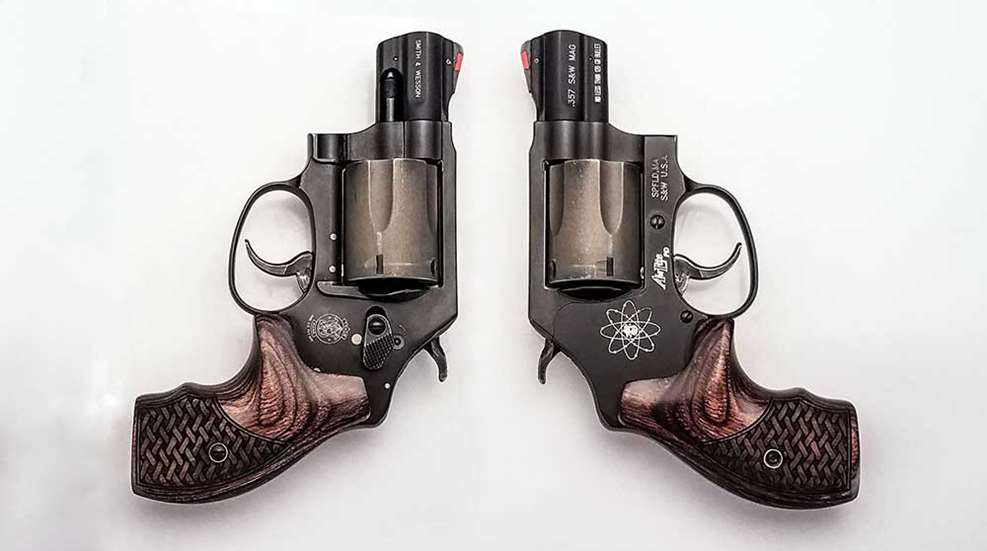
“Nothing happens to the wise man against his expectation, nor do all things turn out for him as he wished but as he reckoned — and above all he reckoned that something could block his plans."
—Seneca
In the modern age, Seneca is considered one of the stalwarts of Negative Visualization. Most of us would recognize the concept more readily as the “What If?” mindset; “what if this happens? Then I will respond in this manner.” It is the leading concept for being prepared both mentally and physically and, at its core, the centralized philosophical concept of personal defense. Without question, it also relies on the mind to be balanced and to be able to reflect on personal experience to temper experience against over-preparedness.
It’s a concept that has served me well mentally through innumerable circumstances, both personally and professionally. The physical manifestations, however, remain a work in progress so to speak, having always taken the Boy Scout motto of “Be Prepared” to the nth degree the majority of my life. It might also be the reason why a gun’s weight has never been off-putting to me. The majority of the time, I've carried a full-size, all-steel pistol or revolver as my primary defensive gun, spare reloads, and a backup gun. In my younger days, when I worked executive protection, this became my standard dress. I occasionally carried three handguns, with the most ever being four, something we will chalk up to youthful bravado. Yet, it wasn’t without a certain conceptual base.
I worked alone. Even now, having transitioned into the private-intelligence business, complete with a business partner, I still routinely work and travel solo.
It was an extensive amount of work travel a couple of years ago that made me apply some of my own analysis to what was and wasn’t working specifically in regards to air travel. Carrying a 1911, spare mags, a 50-round box of ammunition, a backup Smith & Wesson 442 in .38 Spl., a 25-round box of ammunition, an extendable baton, spare magazines, speed loaders, holsters, then toss in a tactical folder or two, clothing and additional gear, it wasn’t surprising to see my checked bag weight routinely come in at 48.5 pounds for a week's worth of travel. Yet, as the traveling continued, the more I started feeling it, figuratively and literally.
On a return flight home, I landed only to discover that my checked bag with my guns had somehow ended up in Chicago. I soon had visions of my beloved Colt Combat Commander making its way into someone else’s life without my permission. Fortunately the next morning, I received a phone call that the bag was at the airport awaiting my pick up. All contents enclosed.
Three days later, I was packing again, off to find someone’s wayward family member who had gone missing. The reality of almost losing my favorite pistol still fresh in my mind, along with the mental burden of one more trip, who knew how many more flights was sitting there on the bed waiting for me with my bag? Biting my lip, I walked down to the gun safe, placing the old Colt inside. This time, I traveled with a familiar Beretta Bobcat in .22 LR.
It looked peculiar, to me at least, to see so much room in the lockable gun box, with the small Smith & Wesson 442 revolver and the .22-caliber Bobcat together and the .45 ACP absent. Later, landing in Denver and grabbing my bag off the belt, I could not help but note how much lighter the bag truly felt. A 50-round box of .22 CCI Stingers, and a 25-round box of Buffalo Bore after all weigh very little in comparison to a single 50-round box of .45 ACP.
Returning home a couple of weeks later, I decided to re-adjust my thoughts on low-threat work travel and armament. Not long after, I decided that for the first time in my life, I would have a "matched pair" of handguns. While the idea conjures up a slick pair of engraved 1911s or Colt Single Action Army revolvers, my reality was a bit more simple-minded.
I managed to acquire one of Smith & Wesson's latest iterations of the Airweight 442 in the company's Pro-Series line. Unlike my No-Dash 442 Airweight from the mid-1990s, this updated model, like all of the ultralight Smith revolvers of the post-modern area, the new Pro-Series can handle a regular range use of +P ammunition, which only adds to the revolvers ability to diversify its diet.
Yet that feature which I was most drawn to was the cylinder, cut for five-shot moon clips. My original thought was to carry a couple of spare reloads via the moon clips. Should the need arise, I simply had to dump the spent rounds and literally snap in a new clip.
The idea fell short.
Surmising rather quickly that the thin, metal moon clips would be far too prone to damage or being bent out of alignment if not properly carried, the whole concept seemed to lose ground to me. Next I found, unlike larger bore sixguns such as the Model 1917, that moon clips are not easy to load into the diminutive J-Frame cylinder. For myself in the least, I found aligning the loaded moon clip is not the easiest of tasks when time is of the essence. Stoking a cylinder full of ammunition from a speed strip or even a speed loader (of which I generally carry both or one of each) was far quicker and already invested in my memory. That said, if moon clips were produced for two and three rounds, this would make for a substainally fast reload for the five-shot revolvers.
This may sound as if the J-Frame moon-clip concept is a bad one, or not worth the extra money. Not true. It is only that the opposite advantage is to be found in unloading the gun. Because of the gun's extremely short ejector rod, snub-nose revolvers have a somewhat dubious reputation when it comes to cleanly ejecting all of their spent casings. This is why it's monumentally important that we train to upend a revolver and strike the ejector rod with some authority to kick all of the brass out. With J-Frame ejector rods, they do not run the full cartridge length, so it's quite possible for one spent cartridge to hang up. This doesn't happen with the moon clips upon ejection. They all go into the cylinder together, and they all leave the cylinder together.
Though I'm no fan of the polymer pistol, it would be absurd not to point out that the single-stack, sub-compact 9 mm pistol is something of the king of the mountain when it comes to concealed carry. It's not hard to see why either. It's the 21st century's response to the snub-nose .38 Spl. or the Walther PPK. Both my business partner Zach and my best pal Dave routinely carry their Glock G43s, and it would be hard to argue against traveling with a brace of these if you're trying to keep it light.
What works about this concept of fly-weight pistols is not only the guns themselves. When carrying a 25-round box of self-defense ammo, the numbers add up. Two five-shot revolvers loaded make for 10 rounds. A couple of speed strips holding five rounds adds another 10 rounds, with a 5-round speed loader finishing the box. The method also translates well for single-stack pistols like the Glock G43, which use a six-round magazine. A brace of these pistols, along with two spare magazines, work themselves through a 25-round box of ammunition in similar fashion.
I prefer a full-size handgun and carry one daily. I'm also a strong advocate for a backup gun for anyone who goes about the world armed. I especially recommend this for the private citizen, and I say this from experience. Just as I daily carry a full-size handgun, I also carry a J-Frame revolver as a backup.
We don't have the benefit of calling in for backup over a radio. Us private citizens are on our own until after the fracas is done, one way or the other. Guns can and do fail, and having a second one available is smart. When traveling away from home, it just makes sense. Having a matched pair of lightweight, compact guns that work in the same fashion, use the same ammunition and the same holsters? To my mind's eye, that is just as smart as it is practical.





































